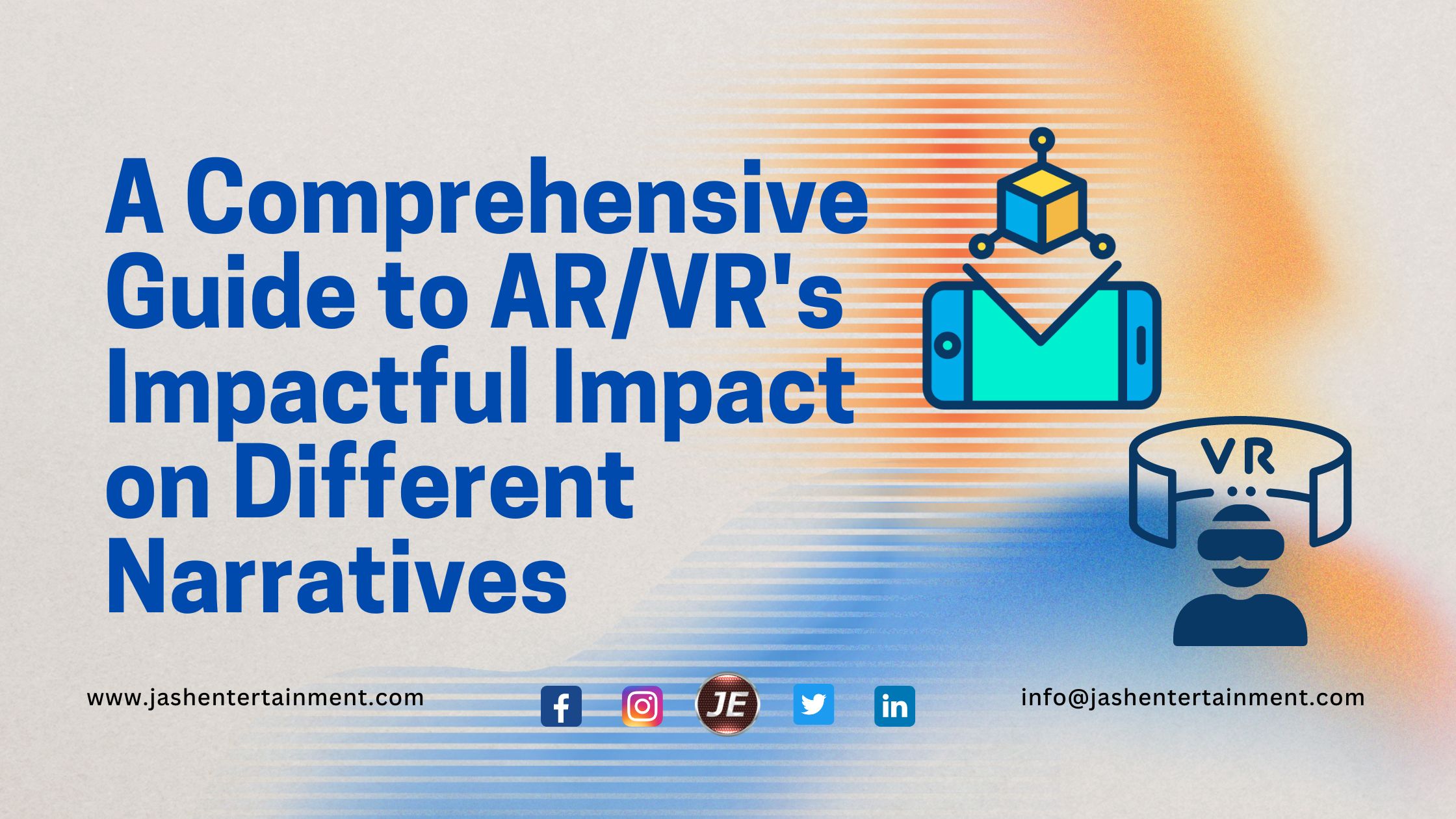
A Comprehensive Guide to AR/VR's Impactful Impact on Different Narratives
Introduction:
In recent years, Augmented Reality (AR) and Virtual Reality (VR) have emerged as transformative technologies with the potential to revolutionize various industries, including entertainment, education, healthcare, and marketing. These immersive technologies have significantly influenced storytelling and narrative experiences, offering new avenues for creativity and engagement. In this comprehensive guide, we delve into the impactful impact of AR/VR on different narratives, exploring how these technologies are reshaping storytelling in diverse fields.
Understanding AR and VR:
Before diving into their impact on narratives, let's briefly differentiate AR and VR:
Augmented Reality (AR): AR overlays digital content onto the real world, enhancing the user's perception of reality. It integrates digital information such as images, videos, or 3D models into the user's environment in real-time.
Virtual Reality (VR): VR creates immersive, computer-generated environments that users can interact with. It simulates a completely artificial environment, shutting out the physical world and immersing users in a digital experience.
1. Impact on Entertainment Narratives:
AR and VR have revolutionized the entertainment industry by offering immersive storytelling experiences:
Interactive Narratives: These technologies allow users to actively engage with narratives, making choices that influence the story's outcome. Interactive VR experiences, such as narrative-driven games or virtual tours, provide users with agency, enhancing their sense of immersion and engagement.
Enhanced Storytelling: AR enhances traditional storytelling by overlaying digital elements onto the real world. For example, AR applications like Pokémon GO merge fictional characters with real-world environments, blurring the line between fantasy and reality.
Immersive Experiences: VR transports users to virtual worlds where they can fully immerse themselves in the narrative. Whether it's exploring ancient civilizations or embarking on space adventures, VR experiences offer unparalleled immersion, allowing users to become active participants in the story.
2. Impact on Educational Narratives:
AR and VR have revolutionized education by making learning more interactive, engaging, and accessible:
Immersive Learning Environments: VR simulations provide students with hands-on learning experiences, allowing them to interact with complex concepts in a safe and controlled environment. From dissecting virtual organisms to exploring historical landmarks, VR enhances learning by making it more experiential and memorable.
Interactive Textbooks: AR enhances traditional textbooks by overlaying interactive elements such as 3D models, videos, and animations. Students can visualize complex concepts in 3D, making abstract ideas more tangible and easier to understand.
Virtual Field Trips: AR and VR enable students to embark on virtual field trips to distant locations without leaving the classroom. These immersive experiences enhance students' understanding of different cultures, environments, and historical events, fostering empathy and global awareness.
3. Impact on Healthcare Narratives:
AR and VR have transformed healthcare by offering innovative solutions for training, diagnosis, and treatment:
Medical Training Simulations: VR simulations provide medical professionals with realistic training scenarios, allowing them to practice surgical procedures and medical interventions in a risk-free environment. These simulations improve skills proficiency and reduce the risk associated with real-life procedures.
Patient Education and Therapy: AR applications empower patients by providing them with personalized health information and interactive therapy sessions. For example, AR-enabled rehabilitation exercises help patients regain motor function by providing real-time feedback and guidance.
Surgical Navigation: AR technology enhances surgical procedures by overlaying digital information onto the surgeon's field of view. Surgical navigation systems enable more precise and minimally invasive procedures, reducing the risk of complications and improving patient outcomes.
4. Impact on Marketing Narratives:
AR and VR have revolutionized marketing by offering immersive and interactive experiences for consumers:
Virtual Product Demonstrations: AR and VR enable companies to showcase their products in immersive virtual environments. Virtual product demonstrations allow consumers to interact with products before making a purchase, enhancing their buying experience and reducing the need for physical prototypes.
Branded AR Experiences: Brands leverage AR to create interactive marketing campaigns that engage consumers in unique ways. AR applications, such as virtual try-on experiences or interactive product catalogs, provide consumers with personalized and engaging brand interactions.
Location-Based AR Marketing: AR-enabled location-based marketing campaigns leverage geolocation data to deliver targeted AR experiences to consumers based on their physical location. Whether it's scavenger hunts, guided tours, or interactive advertisements, location-based AR marketing creates memorable experiences that drive consumer engagement and brand loyalty.
Conclusion:
AR and VR have significantly impacted narratives across various industries, from entertainment and education to healthcare and marketing. These immersive technologies offer new avenues for storytelling, providing users with interactive, engaging, and memorable experiences. As AR and VR continue to evolve, their potential to reshape narratives and enhance human experiences is boundless, promising a future where storytelling knows no bounds.
Through this comprehensive guide, we have explored the transformative impact of AR and VR on different narratives, highlighting their role in revolutionizing storytelling and shaping the future of human interaction and engagement.
By embracing the immersive potential of AR/VR, storytellers, educators, marketers, and healthcare professionals can unlock new avenues for creativity, engagement, and impact in their narratives.
Discover the transformative impact of Augmented Reality (AR) and Virtual Reality (VR) on narratives across various industries, from entertainment and education to healthcare and marketing. Learn how AR/VR technologies are revolutionizing storytelling and creating immersive experiences for users.